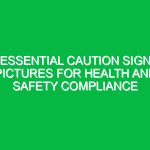Introduction
Hello team! Today, we’re going to engage in an important Toolbox Talk about something that affects all of us in the workplace: stress. Specifically, we’ll be discussing the Two Types of Workplace Stress. Understanding these types can help us create a safer and healthier work Environment. Stress is often overlooked, but it can significantly impact our performance and well-being. Let’s dive in!
What Are the Two Types of Workplace Stress?
In the Health, Safety, and Environment (HSE) context, Two Types of Workplace Stress can be categorized as:
- Acute Stress: This type of stress is typically short-term and arises from specific situations. It’s the kind of stress you might feel before an important presentation or following an unexpected incident on the job.
- Chronic Stress: Unlike acute stress, chronic stress is long-term and can result from prolonged exposure to demanding job conditions, work culture, or personal circumstances. It’s the type of stress that can lead to burnout if not addressed.
Why Understanding These Types Matters
Recognizing Two Types of Workplace Stress is crucial for several reasons:
- Safety Risks: High stress levels can lead to accidents. A distracted mind or fatigue can impair judgment, leading to unsafe decisions.
- Health Effects: Chronic stress can lead to serious health issues, including heart disease, anxiety disorders, and depression.
- Work Productivity: Stress affects focus and efficiency. Understanding how to manage stress can enhance performance and morale.
Identifying Acute Stress in the Workplace
Acute stress is often triggered by specific events. Here are some scenarios that may cause acute stress:
- A tight deadline on a project.
- A sudden change in leadership or team structure.
- Experiencing a near-miss incident on the job.
When encountering acute stress, it’s essential to recognize your feelings and take proactive steps to manage them. Common symptoms include:
- Increased heart rate
- Difficulty concentrating
- Feelings of anxiety or nervousness
Managing Acute Stress
Here are some effective strategies for managing acute stress in the workplace:
- Take Breaks: Short breaks can help recharge your mind. Step outside for fresh air or take a quick walk around the building.
- Practice Deep Breathing: Deep breathing exercises can help calm your mind and reduce physical symptoms of stress.
- Communicate: Sharing your feelings with a trusted colleague or manager can help alleviate stress. Sometimes just talking about it can make a difference.
Identifying Chronic Stress in the Workplace
Chronic stress develops over time and can stem from ongoing challenges. Examples include:
- Consistent high workloads without adequate support.
- Unresolved conflicts with coworkers.
- A workplace culture that lacks recognition or appreciation.
Chronic stress can lead to serious consequences. Some signs to look out for include:
- Persistent fatigue
- Changes in sleep patterns
- Increased irritability or mood swings
Managing Chronic Stress
Managing chronic stress requires ongoing strategies. Here are some practical approaches:
- Set Boundaries: Learn to say no when your plate is full. Setting limits is essential for maintaining mental health.
- Seek Support: Utilize Employee Assistance Programs (EAPs) or talk to HR about your concerns. Professional help can assist in managing stress effectively.
- Engage in Self-Care: Regular exercise, healthy eating, and adequate sleep are vital for stress management. Make time for activities you enjoy outside of work.
Real-Life Example: The Impact of Workplace Stress
Let’s consider a hypothetical scenario to illustrate the impact of Two Types of Workplace Stress.
Imagine a project manager, Sarah, who is facing acute stress as a deadline approaches. She finds herself overwhelmed, struggling to meet expectations. As a result, her focus wanes, and she makes a mistake that could cause delays in the project. Her acute stress triggers chronic stress as the workload continues to pile up, leading to burnout.
In this scenario, if Sarah had recognized her acute stress early on and employed some stress management techniques, she might have prevented the situation from escalating into chronic stress. This highlights the importance of early identification and intervention.
Open Discussion: Your Experiences with Workplace Stress
Now, I’d like to open the floor for discussion. Have you experienced acute or chronic stress in your work environment? What strategies have you found helpful in managing stress? Sharing our experiences can help us all learn and grow together.
Regulations and Standards Related to Workplace Stress
Understanding the legal obligations surrounding workplace stress is essential. Various Regulations focus on employee health and Safety, such as:
- Occupational Safety and Health Administration (OSHA) guidelines, which mandate employers to provide a safe working environment.
- Health and Safety at Work Act, which emphasizes the importance of employee well-being and mental health.
Compliance with these regulations not only protects employees but also minimizes the risk of legal issues for the company. By fostering a supportive work environment, we can all contribute to a safer workplace.
Conclusion
In conclusion, understanding the Two Types of Workplace Stress—acute and chronic—is vital to maintaining a healthy workplace. By recognizing the signs of stress and implementing effective management strategies, we can improve our overall well-being and create a safer environment for everyone.
Thank you for your attention today. I appreciate your commitment to safety and health in our workplace. Remember, we’re all in this together, and your well-being is a priority. Let’s support each other in managing stress and maintaining a positive work environment!


